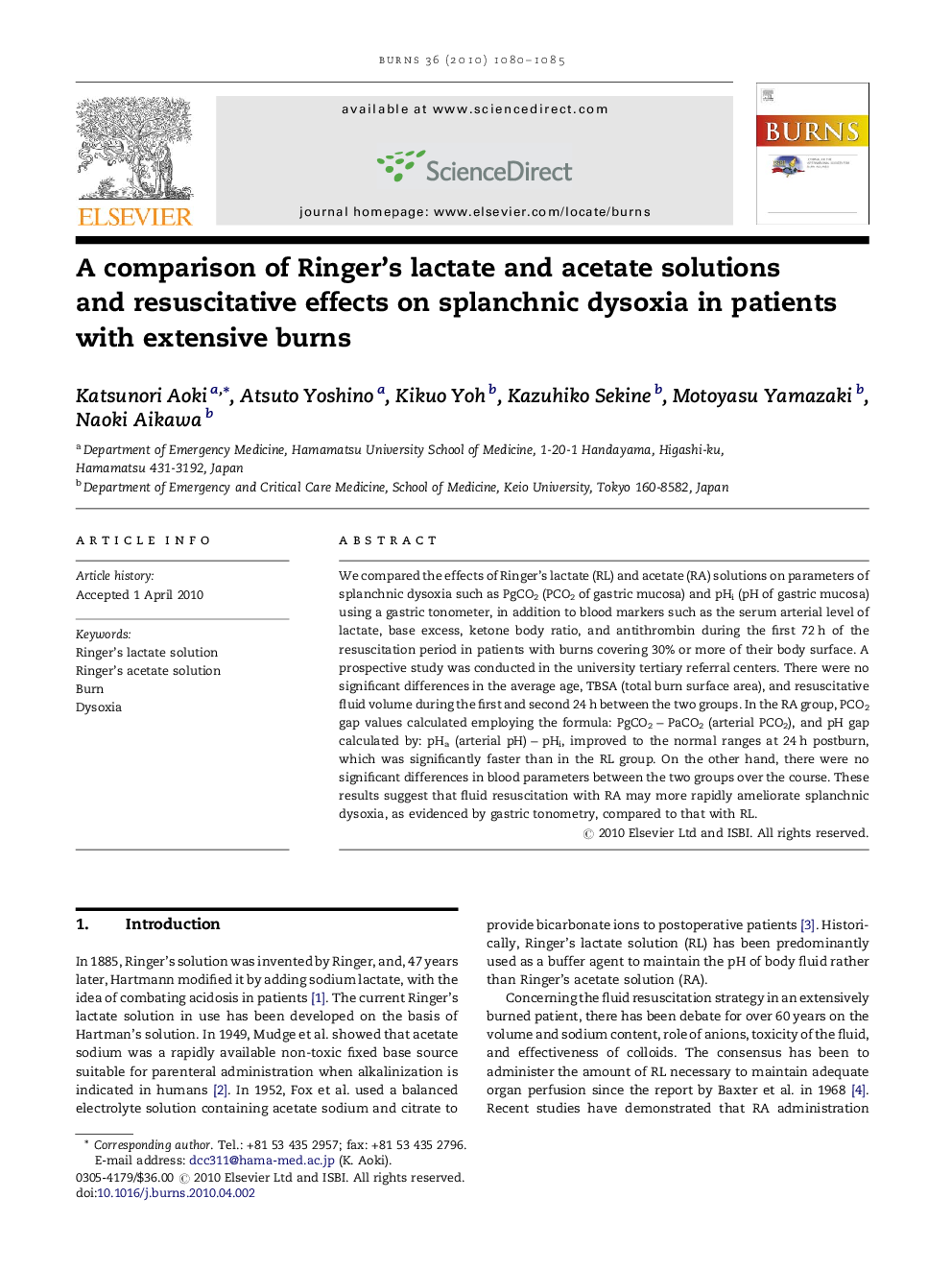| Article ID | Journal | Published Year | Pages | File Type |
|---|---|---|---|---|
| 3105557 | Burns | 2010 | 6 Pages |
We compared the effects of Ringer's lactate (RL) and acetate (RA) solutions on parameters of splanchnic dysoxia such as PgCO2 (PCO2 of gastric mucosa) and pHi (pH of gastric mucosa) using a gastric tonometer, in addition to blood markers such as the serum arterial level of lactate, base excess, ketone body ratio, and antithrombin during the first 72 h of the resuscitation period in patients with burns covering 30% or more of their body surface. A prospective study was conducted in the university tertiary referral centers. There were no significant differences in the average age, TBSA (total burn surface area), and resuscitative fluid volume during the first and second 24 h between the two groups. In the RA group, PCO2 gap values calculated employing the formula: PgCO2 − PaCO2 (arterial PCO2), and pH gap calculated by: pHa (arterial pH) − pHi, improved to the normal ranges at 24 h postburn, which was significantly faster than in the RL group. On the other hand, there were no significant differences in blood parameters between the two groups over the course. These results suggest that fluid resuscitation with RA may more rapidly ameliorate splanchnic dysoxia, as evidenced by gastric tonometry, compared to that with RL.
